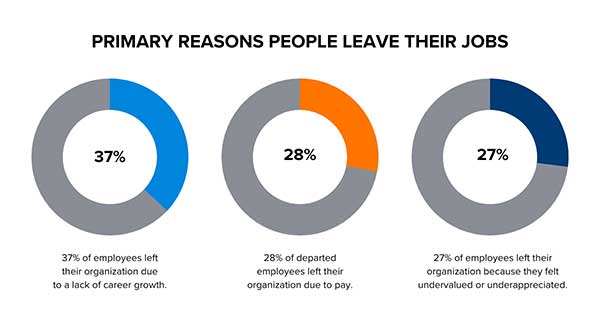Employees want to be successful. Asking them about their experience will help you create a work environment where people want to be.
By Aaron Brown
Work has changed for many industries. Office employees can work remotely, and deskless workers can tune into their weekly meetings through their smartphones without ever coming into the office. To continue to be able to recruit and retain top employees, you will need to make sure your strategy is keeping up with what employees are experiencing. Now, more than ever, organizations need to rely on employee feedback.
The employee experience and performance are intrinsically linked. When employees aren’t engaged, performance decreases. When employees don’t perform, goals aren’t met. When the employee experience suffers, employees will look elsewhere to find an organization that will help them be successful.
Employee success leads to business success. Your employees want to be successful. What can you do to help them? The solution is to ask.
Whether the employee is remote, on the floor, in the office, or out in the field, asking for their feedback will give you the information you need to help them be successful. Different positions have different needs and experiences.
Something as simple as not having the right tools for their job can be discovered when you ask each employee about what they experience every day at work. It’s ok for leaders to admit they don’t know everything about the employee experience. Employees may also have a bright idea to solve one of your problems.
Whether it’s a lack of career growth, feeling unappreciated, or not having the tools to do the job, uncovering what is going on deep inside the organization is the first step to fixing problems and creating a great employee experience.
When you’re communicating with employees, help them understand the importance of sharing their experience and how it can help them and the organization. This helps you be transparent about your intentions and open the floor for feedback.
Don’t forget to be consistent and repetitive with your communication. Organizational psychologist Adam Grant reminds leaders to communicate information multiple times to make sure the message gets through.
Repeat after me: good communication requires repetition.
— Adam Grant (@AdamMGrant) August 25, 2022
Data: leaders are 9x more likely to be criticized for undercommunicating than overcommunicating. Those who say too little come across as unclear and uncaring.
When you’re tired of your message, it’s just starting to land. pic.twitter.com/zlrb6Lr1q9
Once you’ve captured feedback from employees, review the data thoughtfully. What are your employees telling you? Are they happy in their position? Do they crave growth? Do they understand why when the organization makes changes? Are their individual needs met? Are they recognized for great work?
All of these questions help you understand what the employee experience is like. Slice the data to uncover what is working and what you can work on. Doing this can help you see what’s happening across different groups of people in the organization too.
Then, connect the feedback to other metrics you’re already tracking like turnover, productivity, and employee health. Many times, these metrics are tied to issues uncovered through employee feedback.
For example, issues like turnover can be prevented by evaluating what employees are missing. Quantum Workplace research shows 37% of employees leave due to lack of career growth, 28% due to pay, and 27% due to feeling undervalued or underappreciated.

Dive deep into the data to connect the dots to your business plan. How is the employee experience shaping your bottom line? How is the employee experience connected to the business goals you’re trying to achieve?
Employee feedback can give you insights to use to make strategic changes that affect the employee experience and help organizations impact other metrics like performance and turnover.
Don’t let the insights you uncover sit on a shelf. The old saying goes, “actions speak louder than words.” The same is true in the case of your listening strategy.
After the survey is complete, thank your employees for sharing their experiences. A thank you goes a long way toward building trust between employees and leadership.
Then show them you care by making meaningful changes that improve the employee experience. Organizations can’t just talk about valuing employee feedback. They must show employees they value feedback.
It takes a lot of courage to speak truth to power. Making meaningful changes that better the employee experience helps you create a culture of feedback and makes it more likely you’ll get better responses in the future.
When you make changes, don’t forget to communicate why. Connect changes back to employee feedback so they feel a valuable part of the process and can see the importance of their feedback to the organization.
Employees want to be successful. You want everyone in the organization to be successful. Listening to your employees is the first step in getting there. Creating a great employee experience also helps you address unnecessary turnover and make your company a place where people want to work.

Aaron Brown is a Senior Insights Analyst at Quantum Workplace with a background in Industrial and Organizational Psychology. For the past decade, he has been helping organizations prioritize the voice of their employees by helping them design, analyze, and act on employee engagement and performance management initiatives.
In this episode, I sat down with Beejan Giga, Director | Partner and Caleb Emerson, Senior Results Manager at Carpedia International. We discussed the insights behind their recent Industry Today article, “Thinking Three Moves Ahead” and together we explored how manufacturers can plan more strategically, align with their suppliers, and build the operational discipline needed to support intentional, sustainable growth. It was a conversation packed with practical perspectives on navigating a fast-changing industry landscape.